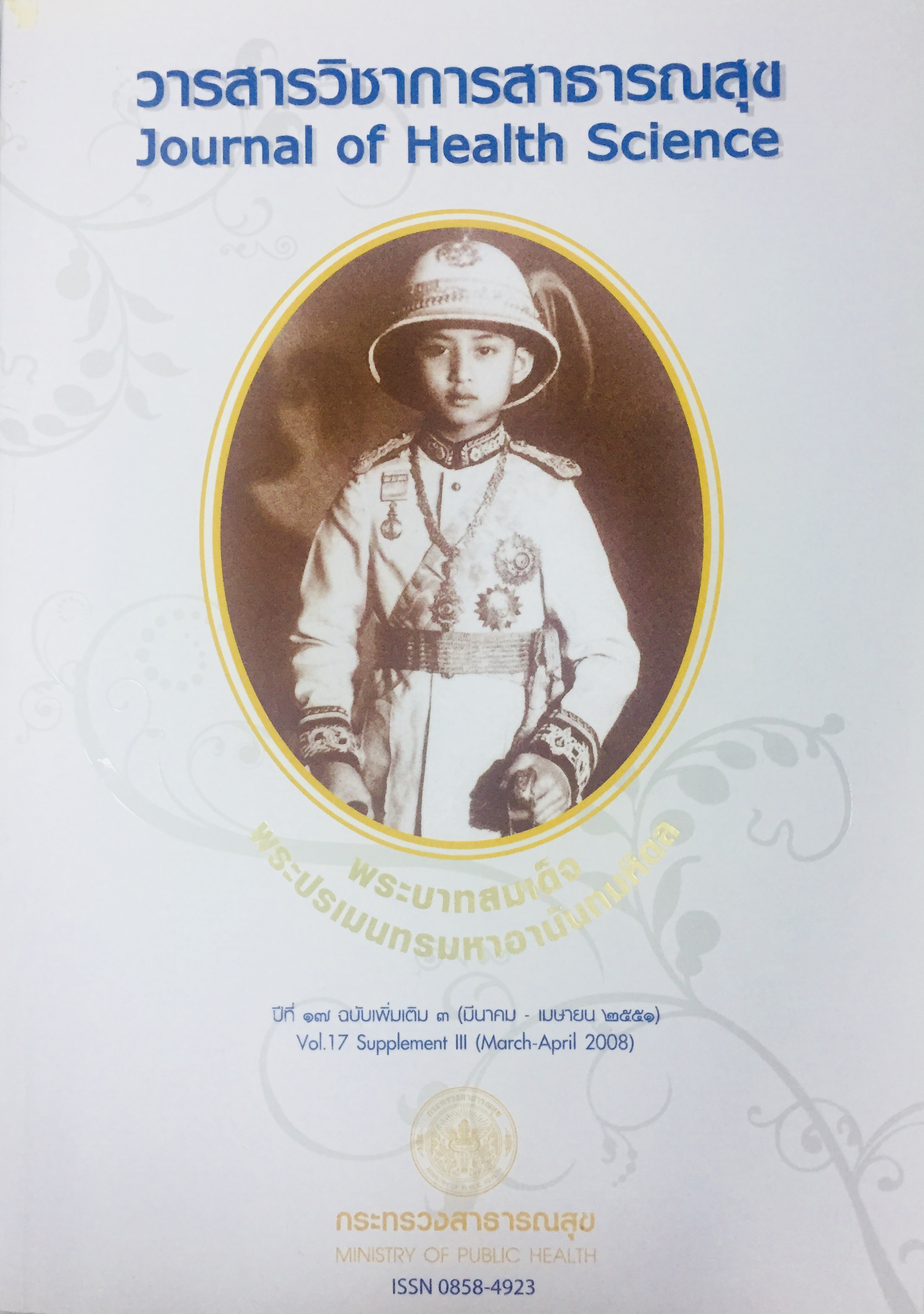Guideline on Hip Fracture Treatment in Elderly in Choaprayayomraj Hospital : A Prospective Study
Keywords:
hip fracture, outcome, prospective studyAbstract
A prospective study was carried out to assess a clinical practice guideline on the treatment of a fracture of the femoral neck or intertrochanteric fracture in elderly. Eigthy four patients, aged 60 years and over, were included in this study during 1 February 30 September 2007. The outcomes to be measured were 1) the mortality rate during hospitalization, 2) the 6 month mortality rate after hip fracture, 3) the ambulatory ability at a followup of 6 months, 4) ambulation at 6 months compare with prefracture ambulatory ability. In this study, the mortality rate during hospitalization was nil. The 6 month mortality rate after hip fracture was 14.29 percent. At a followup of 6 months there were 7 (11.67%) independent community ambulators, 24 (40%) community ambulators with walking aids, 14 (23.33%) household ambulators with walking aids and 15 (25%) nonfunctional ambulators. Twelve (20%) patients regained their prefracture ambulatory ability and 48 (80%) lost some degree of ambulatory ability. This guideline is safe and 75 percent patients can resume walking.
Downloads
Downloads
Published
How to Cite
Issue
Section
License
Copyright (c) 2018 Journal of Health Science

This work is licensed under a Creative Commons Attribution-NonCommercial-NoDerivatives 4.0 International License.







